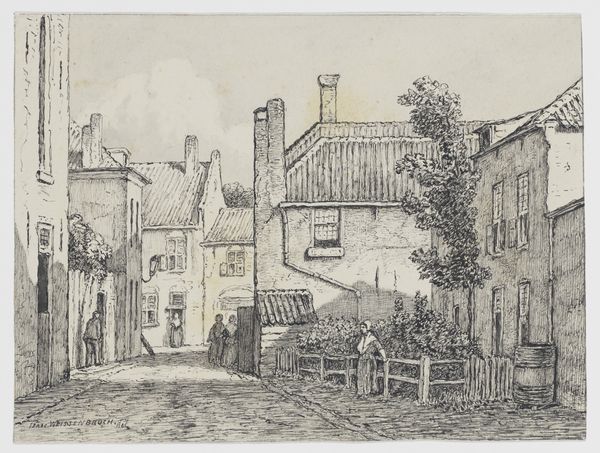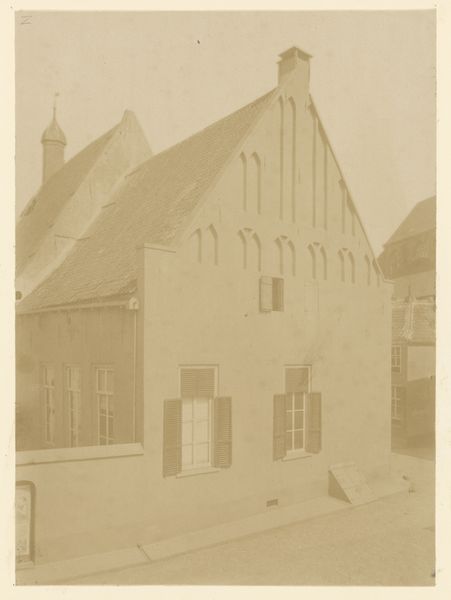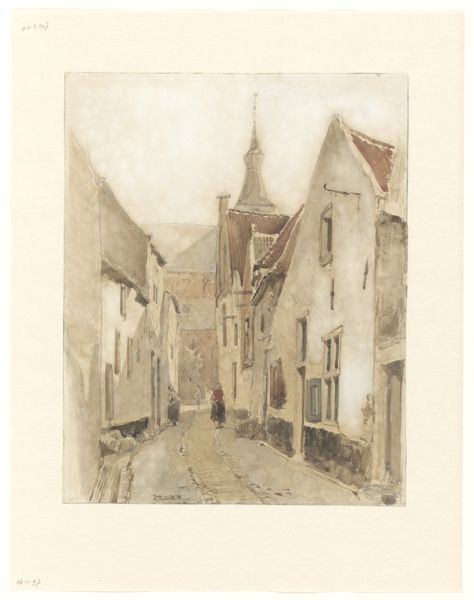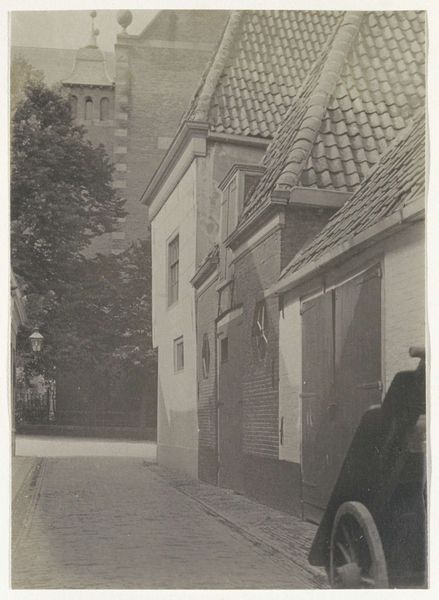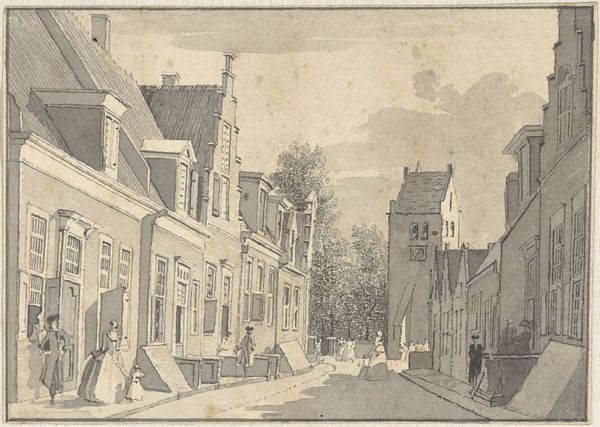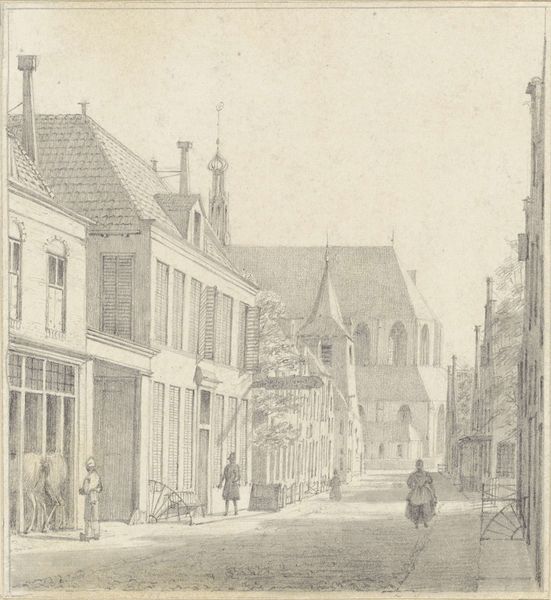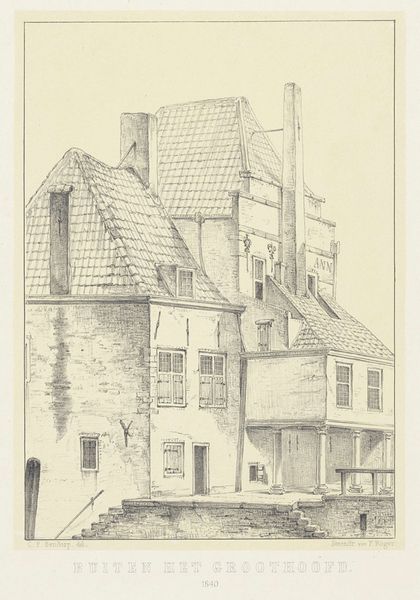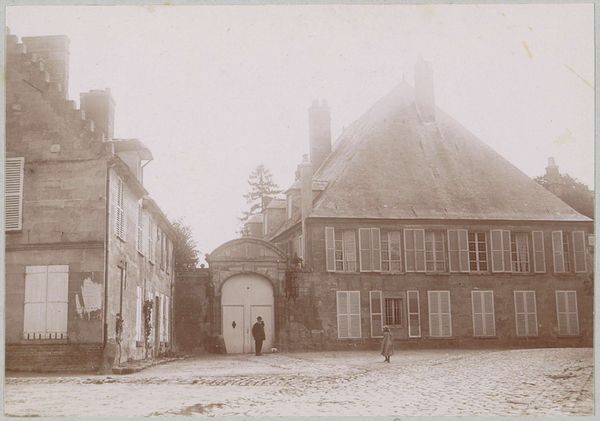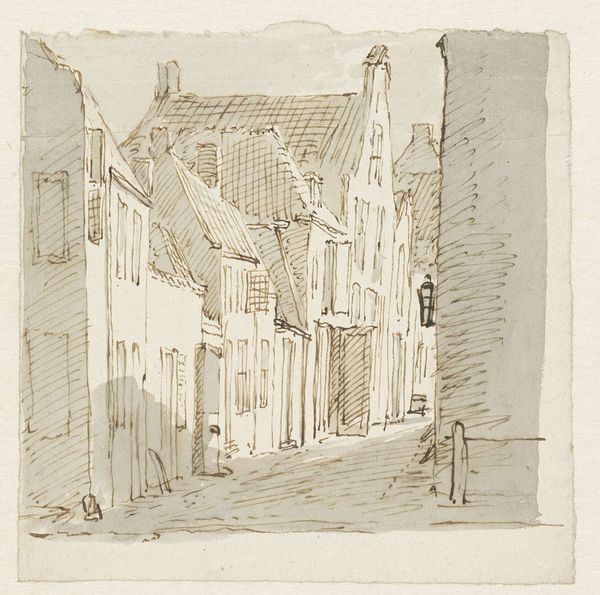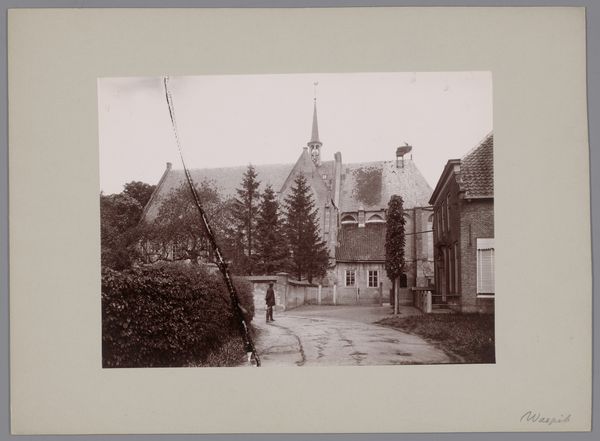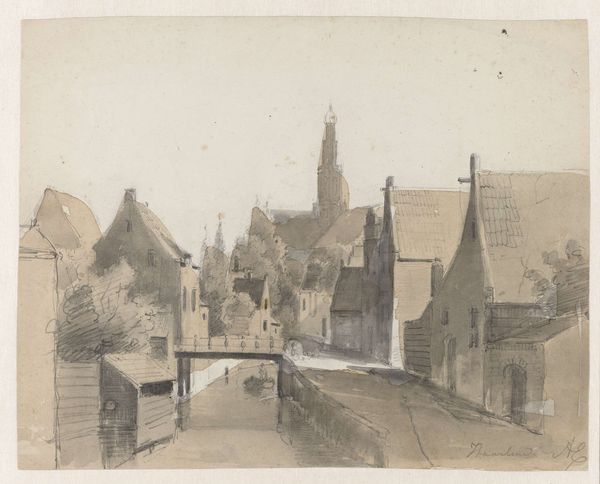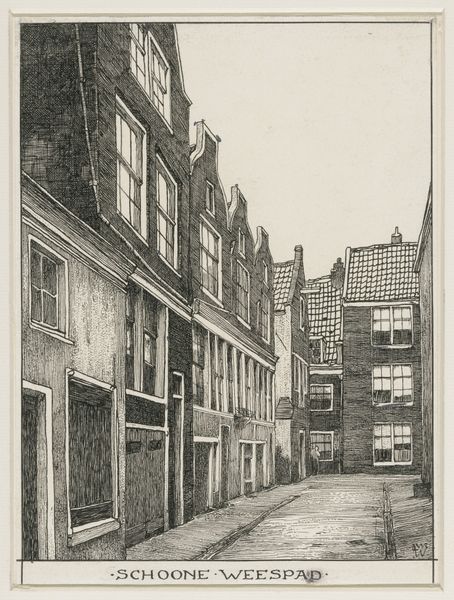
drawing, pencil, architecture
#
drawing
#
dutch-golden-age
#
landscape
#
pencil
#
cityscape
#
street
#
architecture
#
realism
Dimensions: height 262 mm, width 327 mm
Copyright: Rijks Museum: Open Domain
Curator: I find this quiet cityscape rather haunting. What's your initial impression? Editor: The silence is certainly palpable. This drawing, attributed to B.P.G. van Diggelen, captures a street, possibly in Utrecht or Zwolle, sometime between 1825 and 1868, rendered in pencil. But the heavy sky, combined with the geometry of the street, the bare trees in the distance, is heavy— almost claustrophobic. Curator: The artist uses pencil to create delicate tonal shifts across the facades. These create a strong feeling of spatial recession, of distance. The eye is led down the street and toward the hazy emptiness, but then obstructed by the fence in the lower corner. But what symbolic role can we assign to those architectural forms, which carry collective cultural associations and social significance? Editor: Urban environments are always charged with meaning, but I see these details, the cobblestone and the solid brick homes, as indicators of a very particular social reality. Looking at the uniformity, the absence of people, it reflects, perhaps unconsciously, the constraints on individual expression inherent in a rigid class structure. Or perhaps even deeper historical conflicts encoded in these old buildings. Curator: Perhaps it reveals the increasing bourgeoisification of society that accelerated in the 19th century. Editor: It's equally telling that a person chooses to make this the focus of artistic attention. It hints at how deeply enmeshed power is within the everyday structure of our lives. What do you see in terms of enduring imagery? Curator: Well, cityscapes symbolize order, civilization. I think the rendering emphasizes both harmony and confinement. The technique reflects Realism, but through that style, Van Diggelen evokes themes relevant throughout the ages, as the human desire for place bumps up against a sense of restriction. Editor: So it's about seeing those enduring human themes within changing political structures? This exercise helps remind us of art's potential, to open those critical perspectives across temporal lines. Curator: Agreed. Ultimately it reflects a nuanced meditation on the human condition—restrained, and a bit somber, yet resilient.
Comments
No comments
Be the first to comment and join the conversation on the ultimate creative platform.
